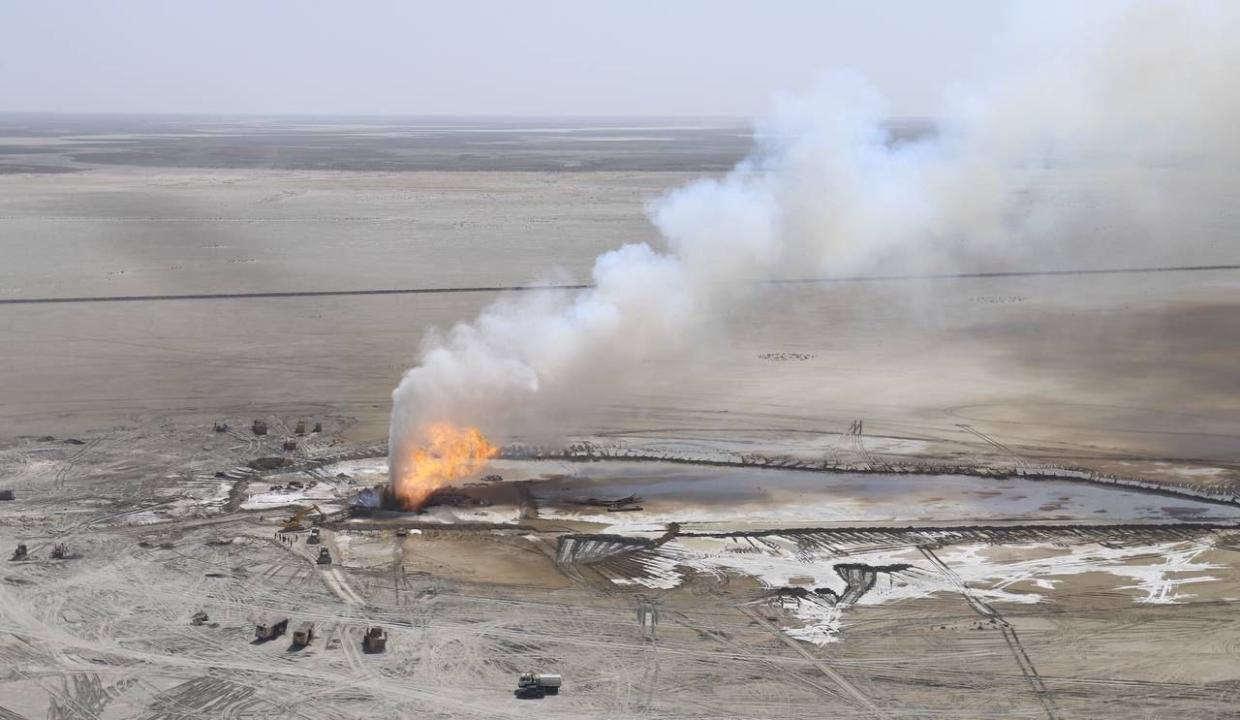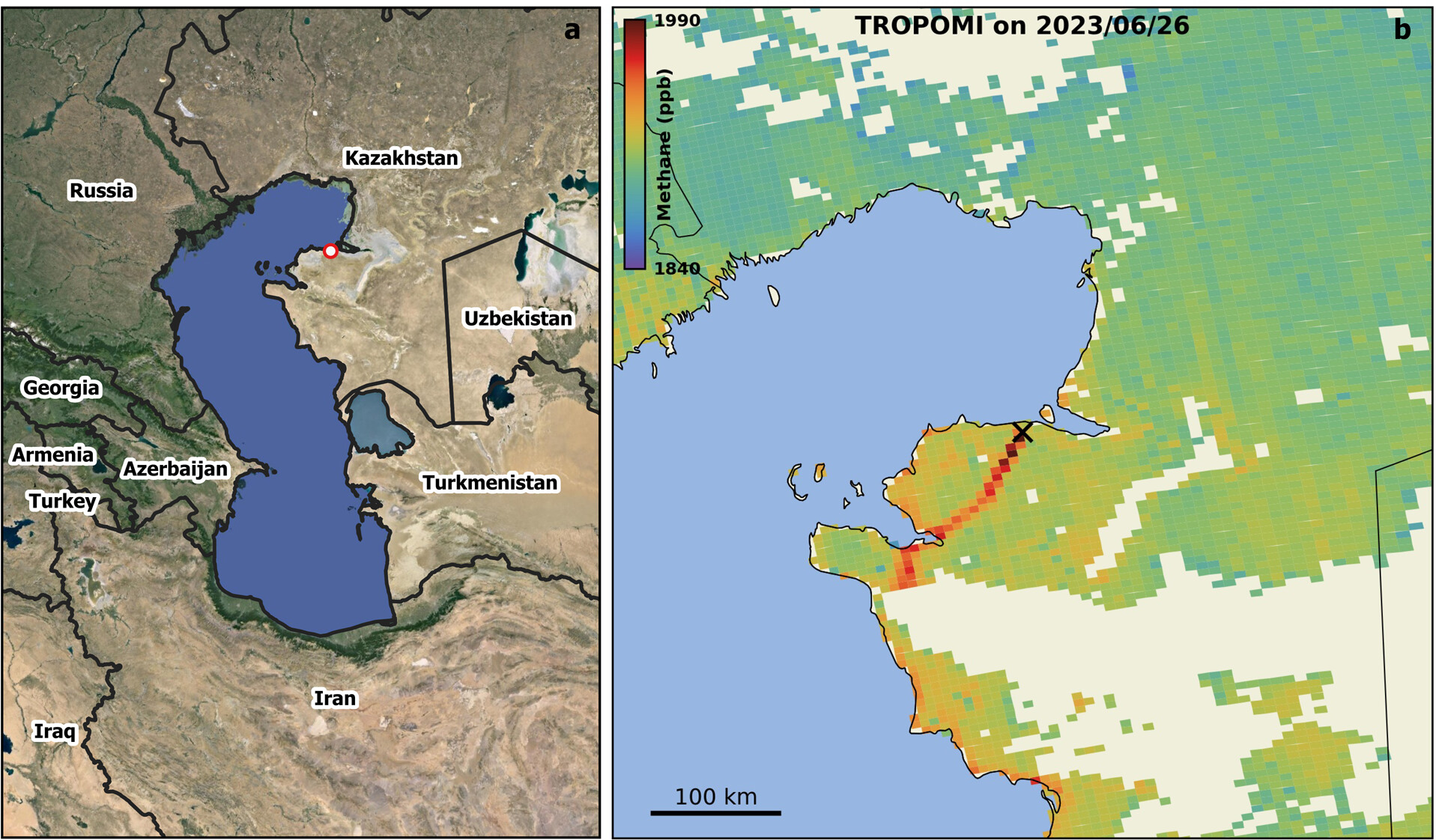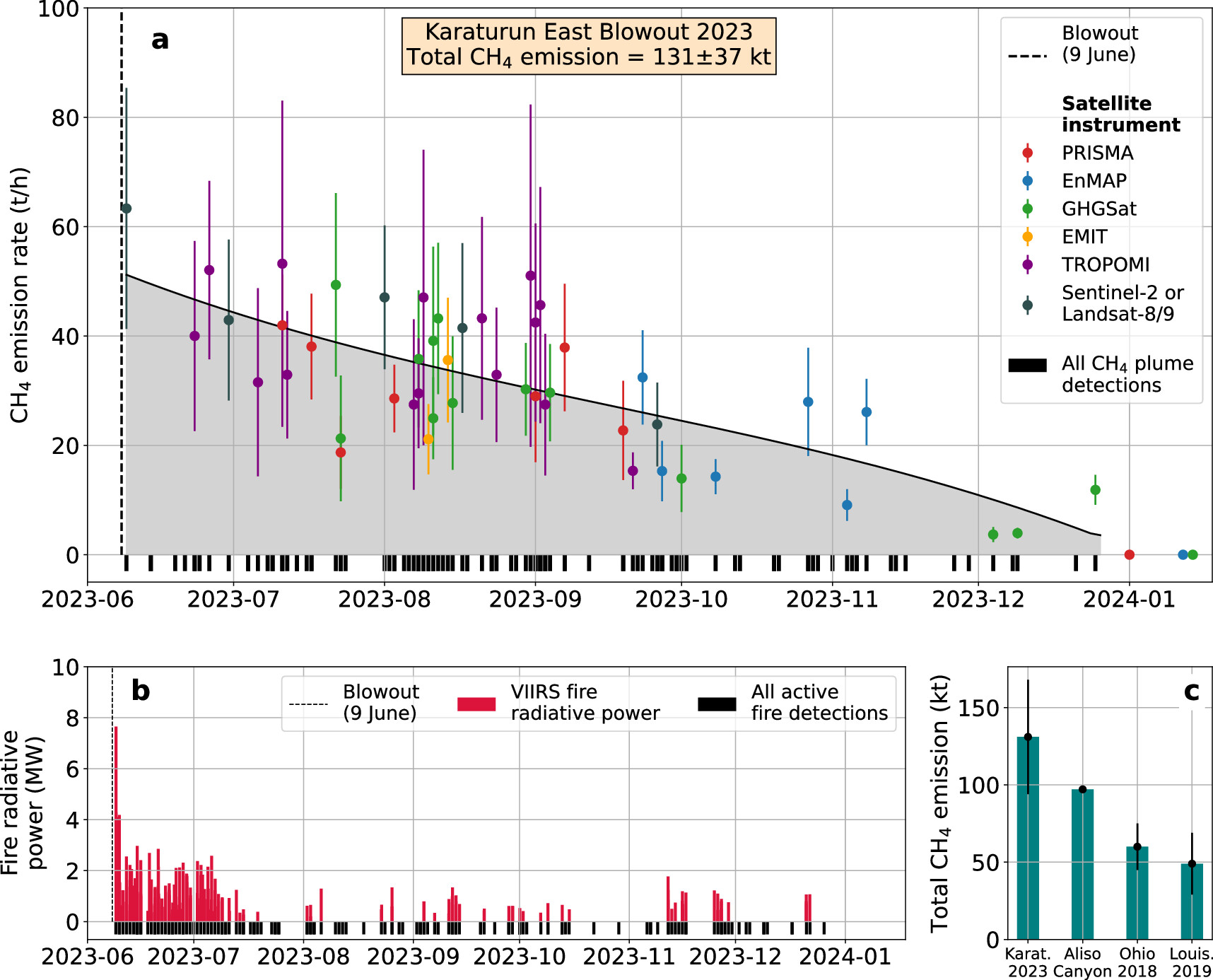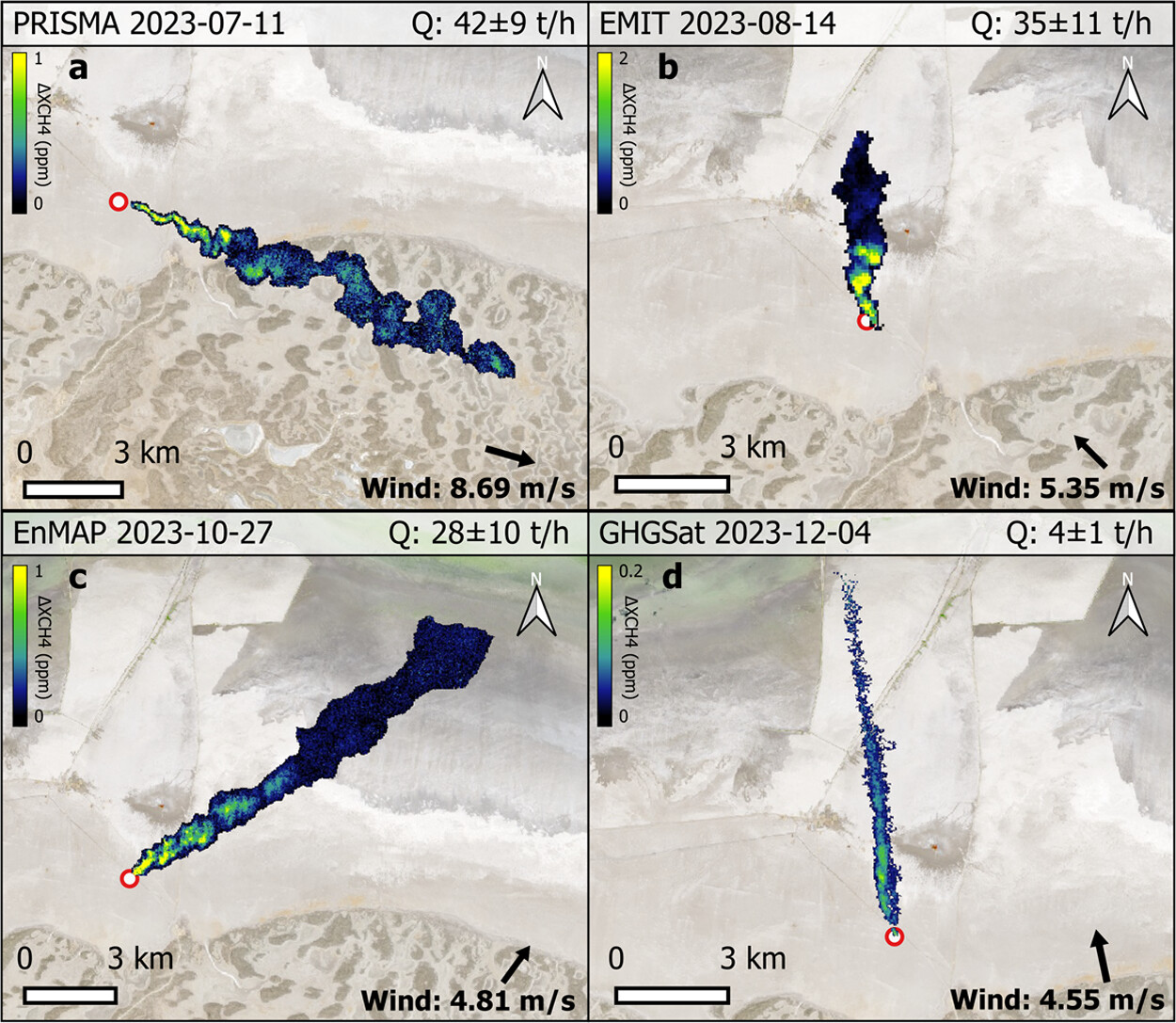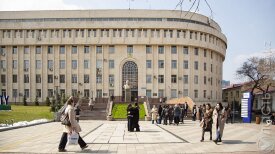Читайте этот материал на русском.
For 205 days in 2023, an invisible cloud of methane leaked through a gas drilling site in the Mangistau region in Kazakhstan. Extensive satellite monitoring and research now demonstrated that this was the largest methane emission from an infrastructure accident ever documented, at least 30% more than the Aliso Canyon gas storage facility accident near Los Angeles in 2015.
An accident at the Buzachi Neft-operated Karaturun gas field on June 9 last year led to a massive fire that burned for months, fueled by the field’s underground hydrocarbon reserves.
Kazakhstan government officials still deny that there was a massive methane leak in connection to the accident at the Karaturun gas field.
Besides the fire, however, the field was leaking methane into the atmosphere, something that only satellites were able to capture via high-precision imaging.
Invisible to the naked eye, methane is highly damaging to the environment and greatly contributes to global warming. At oil and gas operations, companies burn methane to reduce the damage. When burned, in fact, it turns it into carbon dioxide, which has milder effects.
When methane leaks into the atmosphere unrestrained, methane’s contribution to global warming is 80 times more potent than carbon dioxide.
“What’s Karaturun?”
In September 2023, when reached by Vlast, the minister of ecology Yerlan Nysanbayev said he “had not heard” about any fire at the Karaturun field, seemingly unable to locate neither the emergency nor the field. “Where is that? I just took office. I’m just getting into things,” he said as a justification.
His ministry then promised to extinguish the fire and seal the drilling site by October, only to succeed much later. The fire was finally extinguished in December and the related emissions stopped.
But the damage was done.
Researchers now calculated that 134,000 tons of methane were released in the atmosphere during the six-and-a-half months since the accident.
This quantity is 4.5% of the total emissions for Kazakhstan’s energy sector throughout 2023, according to the research published at the Environmental Science and Technology journal.
“Only the sabotage of the Nord Stream 1 and 2 subsea twin pipelines in the BalticSea on September 26, 2022, for which a total of 420−490 kt (95% confidence interval) has been estimated, may have led to greater emissions than the Karaturun 2023 blowout event,” the authors noted.
In February 2024, local inspectors proposed a fine of 362 million tenge ($770,000) against Buzachi Neft, the company responsible for the field.
No Methane To See Here
As Vlast wrote last year, Buzachi Neft is owned by businessman Murat Safin, who owned upstream and downstream oil operations ultimately controlled by Timur Kulibayev, the son-in-law of former President Nursultan Nazarbayev.
For the longest time, Buzachi Neft denied the claims that there was any methane emission.
“Not a single one of the burning charges that were shot sparked an ignition of the cloud above or around the emergency well, which is impossible were there a significant concentration of methane,” Daniyar Duisembayev, the company’s deputy general director for strategic development told us in August last year.
In October, Duisembayev further reassured that “the release of gas from the emergency well decreased significantly, which led to a decrease in the intensity of the burning flame.”
That the company relied solely on the lack of combustion for confirming the absence of a methane leak grossly underestimated the damage.
Buzachi Neft periodically shifted responsibility to its exploration drilling operation contractor, Zaman Energo.
Scientists analyzing the satellite imagery showing the methane leak, however, disagreed.
“On June 9, atmospheric air measurements were taken to determine the presence of pollutants during the fire. The results showed the concentrations of methane exceeded the permissible level,” the Mangistau department of ecology said in an answer to a question from Vlast the same month.
The ministry of ecology, despite glaring evidence also gathered by local inspectors, stubbornly denied the truth. Zhomart Aliyev, the vice-minister of ecology, said months later, on March 12 this year, that there was “no release of methane into the atmosphere” at the Karaturun gas field.
The research, published on June 30, shows that every satellite that surveyed the area between June and December last year detected massive methane concentrations in the atmosphere.
“Extremely large methane plumes were detected during the entire time series,” the authors wrote.
Both the strongest fire and the most substantial emissions occurred in the weeks after the initial blowout, data showed.
“It is important to emphasize that we observe no relevant satellite-dependent biases in the individual flux rate estimates, despite the fact that our time series combines different instruments, methane retrieval approaches, and plume quantification methods,” the researchers noted, laying the ground for more precise methane leak detections in the future.
Kazakhstan’s new negative record was felt beyond the Mangistau or the Caspian Sea region, as atmospheric pollution affects global temperatures and climate.
Поддержите журналистику, которой доверяют.
